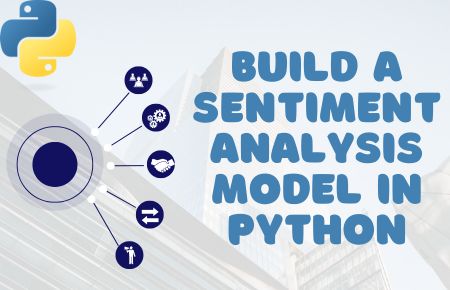Understanding sentiments in text has become a cornerstone of many modern applications. From analyzing customer feedback to monitoring social media, sentiment analysis enables businesses and developers to uncover insights from textual data.
In this article, we’ll walk you through how to build a sentiment analysis model in Python using natural language processing (NLP) techniques and machine learning.
What Is Sentiment Analysis?
Sentiment analysis, also known as opinion mining, is a text analysis technique used to determine the emotional tone behind words. It categorizes text into sentiments such as positive, negative, or neutral, helping machines interpret human emotions.
Applications of Sentiment Analysis:
- Customer feedback analysis
- Social media monitoring
- Product reviews classification
- Political sentiment tracking
Prerequisites for Building a Sentiment Analysis Model
Before we start coding, ensure you have the following installed on your machine:
- Python 3.6 or later: Download Python here.
- Jupyter Notebook: Available via Anaconda Distribution.
- Basic Libraries: We’ll use pandas, numpy, scikit-learn, and
NLTK. Install them using pip if not already installed:
pip install pandas numpy scikit-learn nltk
Step-by-Step Guide to Building a Sentiment Analysis Model
1. Import Necessary Libraries
Start by importing the required libraries in your Python environment.
2. Load and Explore the Dataset
For this tutorial, we’ll use a dataset of labeled movie reviews from Kaggle. You can download it here.
Load the dataset into a Pandas DataFrame and inspect its structure.
The dataset should have two columns:
- Review: The textual review
- Sentiment: The target variable (positive/negative)
3. Preprocess the Text Data
Clean and tokenize the text data to prepare it for model training. Here are the steps:
a) Remove Stopwords
Stopwords like “is,” “the,” and “an” don’t add significant value to sentiment analysis.
b) Check for Null Values
Ensure there are no missing or null values in the dataset.
4. Split the Dataset
Split the dataset into training and testing sets. Typically, an 80-20 split works well.
5. Convert Text to Numerical Data
Since machine learning models cannot directly interpret text, convert the reviews into numerical data using CountVectorizer.
6. Train a Sentiment Analysis Model
We’ll use the Naive Bayes classifier, which is effective for text classification tasks.
7. Evaluate the Model
Predict on the test data and evaluate the model’s performance using accuracy.
Test the model with your own sentences.
Output: The predictions will classify the reviews as positive, negative, or neutral.
Advanced Tips to Improve the Model
- Use TF-IDF Vectorizer: Instead of CountVectorizer, use TfidfVectorizer for better results:
- Try Other Algorithms: Experiment with Support Vector Machines (SVM) or deep learning models like LSTMs for potentially higher accuracy.
- Hyperparameter Tuning: Use
GridSearchCVto find the best parameters for your model.
FAQs
What is sentiment analysis used for?
It is widely used in customer feedback analysis, social media monitoring, and brand reputation management.
Why use Naive Bayes for sentiment analysis?
Naive Bayes is simple, fast, and effective for text-based classification tasks.
Can I use a pre-trained model for sentiment analysis?
Yes, libraries like Hugging Face Transformers provide pre-trained models like BERT for sentiment analysis.
What is the difference between CountVectorizer and TfidfVectorizer?
CountVectorizer counts word occurrences, while TfidfVectorizer considers word importance relative to the entire corpus.
How accurate is sentiment analysis?
Accuracy depends on the dataset, preprocessing, and model. With proper tuning, you can achieve 85–95% accuracy.
Wrap Up
By following this guide, you now know how to build a sentiment analysis model in Python. From preprocessing text to training a Naive Bayes classifier, this project gives you a hands-on introduction to natural language processing.
As you advance, consider exploring deep learning frameworks like TensorFlow or PyTorch for more sophisticated sentiment analysis models.
A big thank you for exploring TechsBucket! Your visit means a lot to us, and we’re grateful for your time on our platform. If you have any feedback or suggestions, we’d love to hear them.



